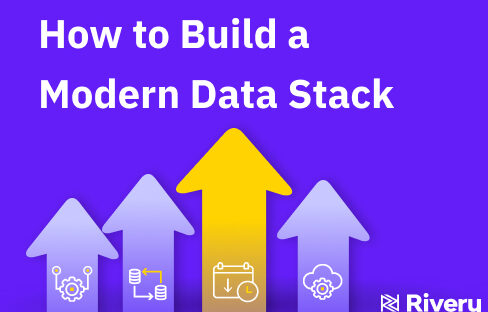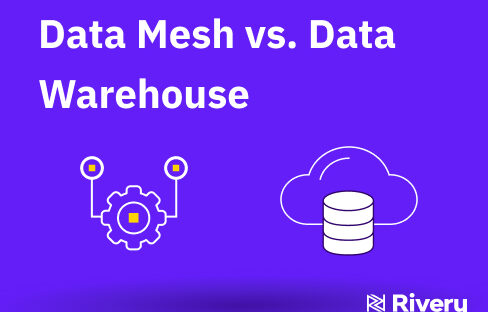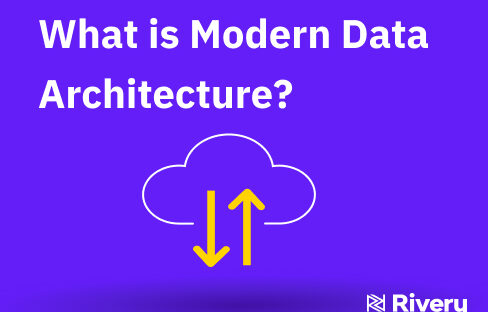In today’s digital data-driven world, it’s easy to get overloaded with the massive amounts of data coming from several different sources. This is where Data transformation, which is the second part of the ETL (Extract, Transform, Load) process, comes in to save the day. It is an integral part of running your business as it can provide you with insights into the current workflow, and customer behavior while keeping all of your data organized and easy to understand and work with.
If you’ve never heard of data transformations, you will find this article helpful. We will go into what is data transformation in the data warehouse, data transformation meaning, its advantages, and disadvantages, and much more.
Keep reading to learn more!
What is Data Transformation?
Data transformation is part of the ETL process (extraction, transformation, load), which is a widely used process to combine data from multiple sources in one database. Specifically, data transformation is the second stage, which can transform the format, value, or structure of the data to achieve a certain goal.
Based on your needs, there are different types of data transformation, and they go as follows:
- Constructive: refers to adding, copying, or replicating data
- Destructive: refers to deleting the entire data
- Aesthetic: refers to standardizing street names, for example,
- Structural: refers to moving, renaming, or combining names.
Ultimately, data transformations help companies convert the data extracted from different sources into a format that can later be used for analysis, storage, or part of the integration process. Data engineers also use Python or domain specific languages like SQL to transform the data. Depending on a company’s needs, an ETL tool can help with automating and simplifying the entire process.
Why is Data Transformation Important?
Now that we’ve answered “What does data transformation mean?” let’s look at the importance of data transformation. Businesses that know their customer behavior and shopping habits or have insight in real time about the current workflow in the organization have a better competitive edge over the others.
To learn all that information, and more importantly, to have it at your disposal, you will need to properly collect it and store it. Previously, all data circling within a company was stored in flat files or Excel sheets, making it easier to process and use the information wherever applicable. But, there were fewer sources of information than today.
Nowadays, raw data comes from multiple places at once, and it comes in varying formats, so before it can be stored in a cloud-based warehouse or a database, it needs to be transformed.
Data transformation makes the analytic process more efficient and allows businesses to make more objective, data-driven decisions. It helps organize the raw data, which is otherwise hard to analyze as is, and it can change the format, structure, or its value depending on the source and storage.
Key Benefits of Data Transformation
Despite giving you clean and usable data, data transformation offers an array of other benefits that go as follows:
Improved Data Management
Improving data management might be the leading advantage of data transformations. Retrieving data from numerous sources can cause inconsistency in metadata and difficulties in reading that data.
Data transformation simplifies the process as it refines metadata to become more readable for the user, i.e., you. With it, you eliminate the possibility of misinformation and get a filtered and clear data set which allows you to navigate the information freely and confidently.
Improves Data Quality
Since companies today retrieve information from various external sources, coming across issues like missing data, null values, or inconsistent data is quite common but also quite the issue. Business growth depends on the quality of information. Therefore having clean, filtered, and valuable information is imperative.
Data transformation minimizes these issues, as during the process, it instantly improves the data quality so that you can run an analysis with updated information. Additionally, you can make better choices when it comes to the decision-making process.
Data Compatibility
Data transformation helps apps, systems, or other data types reach that compatibility. In other words, a given piece of data may be readable for your system but not for the app because of differences in coding, for example.
However, data transformation converts any data into the correct format so that the app and system reach compatibility and read the information simultaneously.
Key Challenges of Data Transformation
While knowing the benefits and advantages businesses have with data transformation, we cannot avoid the challenges that arise along the process.
Below we picked the top challenges you need to keep in mind during the data transformation process.
Requires a Good Eye for Detail
Formatting and converting existing data to become more readable requires supervision to prevent inexisting information or data. Also, you will need data analysts and engineers with experience because unqualified technical users will not notice misspelled words or typos, for example, and are generally unfamiliar with the range of accurate values.
Overwhelms the System
Data transformation is an overwhelming process, especially when performed on on-premise data warehouses before adding it to applications or after loading. This is dangerous because this timing can be overwhelming for the compute system and slow down the rest of the operations.
On the other hand, when using a cloud-based data warehouse, data transformation should occur after loading the data. That way, the platform can scale and rise to the demand.
Time-Consuming
The data transformation process can take several hours to complete a batch, and you have two or more batches to complete. Converting and formatting new information is tiring, requires an eye for detail, and is definitely time-consuming.
Businesses must hire qualifying data experts to run transformations and keep track of the process regardless of how much time it may require to complete the entire task.
Costly
Last but not least, the challenge concerns the business’s budget. Data transformation is expensive.
The data transformation costs involve using other tools, hiring experts, using infrastructure and robust software, amounting to thousands of dollars. Therefore, you must include your budget costs in the transformation process.
How to do Data Transformation
There are two approaches to data transformation. You can do it the traditional way or the manual way. Below we discuss the transformation approaches in detail.
Traditional Data Transformation Method
The traditional data transformation method refers to batch data transformation because this process uses batches traditionally.
In other words, this process includes coding and integrating transformation rules into the company’s data through the integration tool. There is a popular sub-process under this method known as the micro-batch.
Many companies relied on the micro-batch for ages. It is a process that transforms and delivers data with low latency. However, the micro-batch requires experts; it’s time-consuming, costly, and takes more time. It requires the manual extraction of data with scripted languages like Python and SQL most notably. Given this information, we can say that the traditional approach is slightly outdated and calls for something innovative and more effective.
The Interactive Transformation
The interactive transformation allows companies to change, correct, or understand data through clicks, a.k.a interaction with datasets.
One of the best things about interactive data transformation is that the process doesn’t require the analysis to follow all steps methodically. Also, the expert could be anyone, and you do not need a specialist in the field to supervise or run the process, as no technical skills are required here.
Otherwise, this process is highly effective because it allows the user to see the patterns and mistakes created in the dataset and an option to eliminate them. As mentioned, no expert is required for this process, allowing effective time and reduced costs for paid personnel to run this business.
Additionally, this process does not ask for the preparation and transformation of the data. The data analyst is practically in total control of this process and can modify every piece of information.
Data Transformation Use Cases
Data transformation is necessary for all kinds of businesses as it can improve the decision-making process. However, several industries are tightly related to the process. Below we elaborate on each industry in particular.
E-commerce
As one of the leading trends currently, the Eccomerce companies receive information from different sources. For example, any eCommerce store has an ERP and CRM as internal systems where the majority of the company’s workflow information is stored. On the other hand, they also receive information from marketing apps for better insight into their customer’s buying habits. This is a different type of source that also needs monitoring and processing of the information.
Data transformation for Ecommerce significantly simplifies the process as it allows the user to have filtered information at hand and make data-driven decisions and improves app compatibility.
Finance or Banking Sectors
The integration of the data transformation process in the financial or banking industry cannot be stressed enough in words. Essentially, the finance and banking industries and sensitive sectors where a piece of misinformation may cost a fortune.
Moreover, the banking and finance sectors integrate structured and unstructured data, which creates a large pool of information that has to be sorted to avoid the occurrence of fraud.
Franchises
Any enterprise with several stores worldwide needs to have access to every information regarding the stores. We say expanded in terms of spreading the business around, not size-wise.
In such cases, the company has to have full insight into every particular store. That includes internal and external sources to increase sales, have insight into inventory, customers’ buying habits, and more.
Corporate Merger
Although a corporate merger doesn’t refer to a specific industry, we have to mention that the use of data transformation, in this case, is more than necessary.
Namely, any corporate acquisition requires extensive data from all sources, including management systems, SQL Server, Dd2 Oracle, etc. Imagine having to merge and go through all that gathered data in a single place. It will be hard-to-read, and impossible to follow. Not to mention that it may blur the entire process of bringing decisions.
However, with the data transformation process, the gathered information will be organized and sorted, allowing you to have better insights and make more informed decisions
Data Transformation Tools
Many data analysts use coding to complete data transformation functions; however, that method is not the cheapest or most effective. Hand coding doesn’t mean the process is the smoothest or error-free.
On the contrary, constantly changing the analyst expert to complete the data transformation can lead to mistakes, as every person has a different approach to coding. Plus, remember that codes must be rewritten every time the data transformation is on, increasing costs.
However, you can easily replace manual coding and regular code rewriting with ETL or data transformation tools.
The ETL tool is not only a cost-effective tool but can also improve the data transformation process as it allows you to create visuals of the entire data flow that boosts readability. Additionally, the data transformation tools offer the following features:
- Parallelization;
- Monitoring;
- Failover;
- Custom code scaling;
Otherwise, today’s data transformation processes are much more complex than a decade ago. The overall environment and the need to improve the processes have changed.
Nowadays, traditional servers are connected to clouds, and the entire data is transferred on it. The ETL tools come with special connectors that can easily connect to all sources, transfer the necessary data, and prepare it for transformation.
These tools exist to simplify the ETL process, including the data transformation process. By using the tools, you will save more time and minimize the risks of mistakes.
Defining the Data Transformation Process
The Data transformation definition often is complex and hard to follow. When we ask, “What is data transformation?” or “What is data transformation in data warehouse?” we need simple answers.
So, to define data transformation, imagine that it is a process of converting data formats from one source system to another to reach compatibility or readability. Of course, the data transformation process is part of the:
- Data integration;
- Data management;
- Data warehouse;
Otherwise, the second stage of the ETL process can be simple or complex. This depends on the types of required data transformations you need for the target system. In both cases, the process can be run automatically, manually, or as a combination of the two.
But, with the increased implementation of applications to businesses, owners or data analysts have more information sources that must be covered during the ETL process. Of course, with the data transformation, expect to see high volumes of data conversions.
In a nutshell, the data conversion process allows users to convert information from one format or structure to another to reach compatibility or improve readability.
How Can Rivery Help?
In a nutshell, the data transformation process is a huge responsibility, as a small mistake can cost you a fortune or force you to redo the entire task. The tools are there, but finding someone who can take upon the challenge of successfully converting data can be utterly difficult.
However, at Rivery, we created a tool that helps our customers find the perfect data management solution to improve their business. With our solution, you can build complex end-to-end ETL pipelines – fast and easy!
With our Data Ingestion Tool, you can extract any data from any source to a data lake or a cloud warehouse of your choice with a few simple clicks. Our Pre-Built workflow templates allow you to transform any raw data into business data models. Additionally, you can also automate the entire data integration process with our advanced transformation workflows. All this is monitored through our Data Orchestration Platform, which allows you to control the entire data flow from start to finish and create your own ecosystem that works for you.
At Rivery, we have more than 200+ pre-built and custom connectors, ETL and Reverse ETL, CSC Replication, and more! We offer a unified solution for Ingestion, Transformation, Orchestration, Activation, and Data Operations – built by data pros for data pros.
Minimize the firefighting. Maximize ROI on pipelines.





